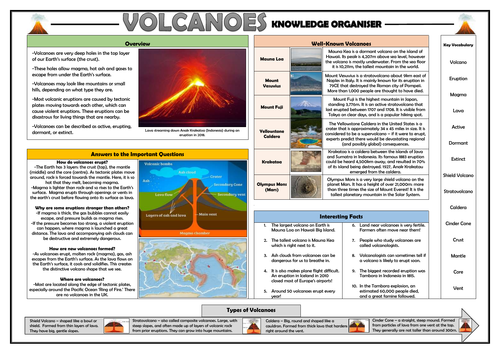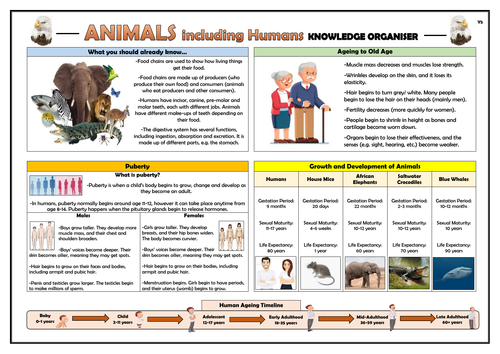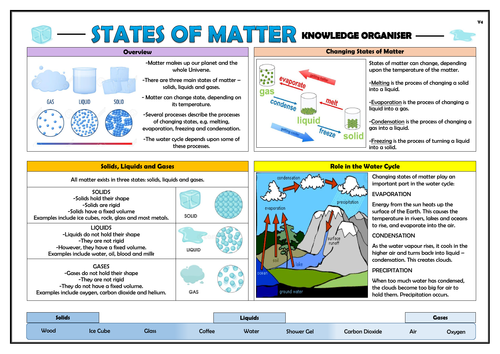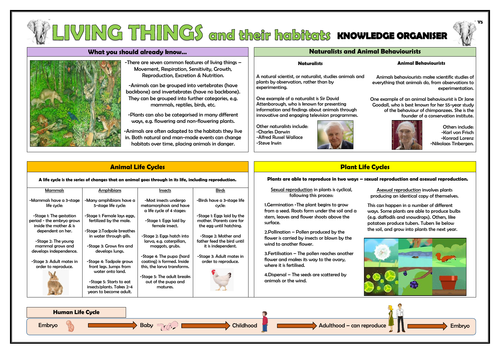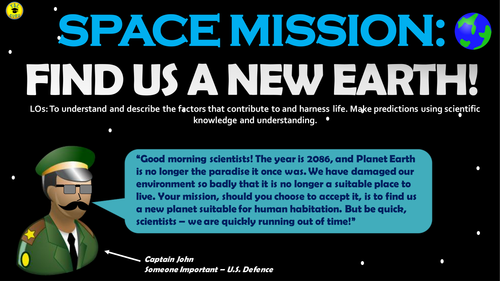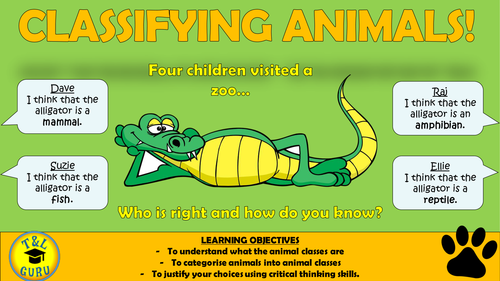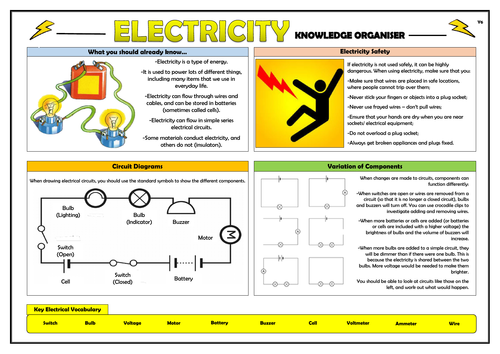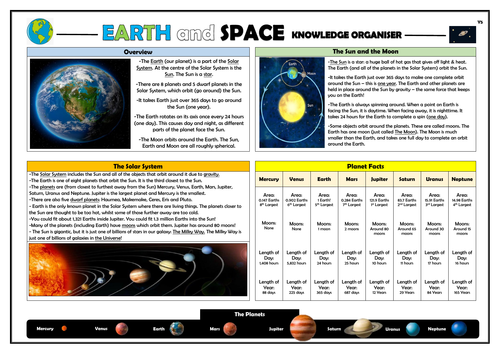
3k+Uploads
1916k+Views
2245k+Downloads
Primary science

Pointless - Template to Create Your Own Games!
Template for you to create your own Pointless games - whatever subject or topic you are teaching!
Based on the popular game show 'Pointless', this resource is perfect for use as a starter activity, plenary, or revision tool. Editable, so that you can change to any other topic or change the questions/answers. Containing almost 30 slides of sound clips, engaging visuals, and suitably challenging questions, this resource is effective at both promoting engagement and enhancing learning.
There are several built-in rounds of questions to build students' understanding in your topics, including:
- Identifying terms from definitions
- Anagrams of key terms round
- Recalling the highest level knowledge.
The nature of the game ensures that this resource can challenge students of all levels.
NOTE: You can buy this resource alone, or in a bundle of 8 Pointless games, for only £1 more!
Bundle Sale

Huge Primary Design and Technology Knowledge Organisers Bundle!
These clear, detailed and visually-appealing resources offer a complete reference point for children, teachers and parents building knowledge of the Primary Design and Technology curriculum. The organisers are clear, logical and fully aligned with the expectations of the National Curriculum.
Included are organisers based on:
-KS1 Structures: Freestanding Structures
-KS2 Structures: Shell Structures;
-KS2 Structures: Frame Structures;
-KS1 Mechanisms: Slides and Levers;
-KS1 Mechanisms: Wheels and Axles;
-KS2 Mechanisms: Gears and Pulleys;
-KS1 Textiles: Joining Techniques;
-KS2 Textiles: Simple Sewing;
-KS2 Textiles: More Complex Sewing;
-KS2 Electrical Systems: Simple Circuits and Switches;
-KS2 Electrical Systems: More Complex Circuits and Switches;
-KS1 Food and Nutrition: Preparing Food
-KS2 Food and Nutrition: Healthy and Varied Diet;
-KS2 Food and Nutrition: Culture and Seasonality
The resources are designed to be printed onto A3 (although can be printed onto A4), and are provided in both PDF and Word versions (so that you can edit if you want to). All images used are licensed for commercial use and are cited on a separate document (included).

Volcanoes Knowledge Organiser!
This clear, detailed and visually-appealing resource offers a complete reference point for students learning or revising knowledge relating to volcanoes. It contains comprehensive sections on:
-Overview of Volcanoes;
-Answers to the Key Questions;
-Types of Volcanoes;
-Well-Known Volcanoes;
-Key Vocabulary;
-Key Facts.
The resource is designed to be printed onto either A4 or A3, and is provided as both a PDF and a Word version (so that you can edit if you want to). All images used are licensed for commercial use. The resource is most suitable for students in KS2 or KS3.
Bundle Sale

KS1 Science Knowledge Organisers Bundle!
These clear, detailed and visually-appealing resources offer a complete reference point for all 8 units from Years 1-2 within the science National Curriculum.
Year 1 Knowledge Organisers:
-Animals, including Humans;
-Plants;
-Everyday Materials;
-Seasonal Changes.
Year 2 Knowledge Organisers:
-Animals, including Humans;
-Plants;
-Living Things and their Habitats;
-Use of Everyday Materials
The organisers are separated into logical compartments, based on the key curriculum expectations.
Each resource is designed to be printed onto A3, and is provided as both a PDF and a Word version (so that you can edit if you want to). All images used are licensed for commercial use and are cited on a separate document (included).

Year 5 Animals including Humans Knowledge Organiser!
This clear, detailed and visually-appealing resource offers a complete reference point for Year 5 children, teachers and parents covering knowledge relating to ‘Animals including Humans’, as a part of their science learning. It contains comprehensive sections on:
Overview and ‘what you should already know’ (from their prior learning);
Puberty;
Human Ageing Timeline;
Ageing towards Old Age;
Growth and Development of Animals;
Key Vocabulary (underlined).
The content is fully aligned with the NC expectations for Year 5 children relating to ‘Animals including Humans:’
-describe the changes as humans develop to old age;
-learn about stages in the growth and development of humans. They should learn about the changes experienced in puberty;
-research the gestation periods of other animals and compare them with humans.
The resource is designed to be printed onto A3, and is provided as both a PDF and a Word version (so that you can edit if you want to). All images used are licensed for commercial use and are cited on a separate document (included).

Year 4 States of Matter Knowledge Organiser!
This clear, detailed and visually-appealing resource offers a complete reference point for Year 4 children, teachers and parents covering knowledge relating to ‘States of Matter’, as a part of their science learning. It contains comprehensive sections on:
Overview;
Solids, Liquids and Gases;
Changing States of Matter;
Role in the Water Cycle;
Solids, Liquids and Gases Continuum;
Key Vocabulary.
The content is fully aligned with the NC expectations for Year 4 children relating to ‘States of Matter’:
-Compare and group materials together, according to whether they are solids, liquids
or gases
-Observe that some materials change state when they are heated or cooled, and
measure or research the temperature at which this happens in degrees Celsius (°C)
-Identify the part played by evaporation and condensation in the water cycle and
associate the rate of evaporation with temperature.
The resource is designed to be printed onto A3, and is provided as both a PDF and a Word version (so that you can edit if you want to). All images used are licensed for commercial use and are cited on a separate document (included).

All About Newts - KS2 Non-Fiction Reading Comprehension!
This whole class reading session aims to develop children’s fluency and comprehension skills through reading an information factfile about newts (the text is two A4 sides in length).
The reading is followed by a series of activities aiming to develop children’s VIPERS skills: vocabulary, inference, prediction, explanation, retrieval, sequencing and summarising. It also contains a vocabulary check immediately after the extract is read to clarify any unfamiliar/ difficult language.
The tasks are comprised of quick-check questions, solo thinking, pair/ group discussions and deeper thinking activities. The extract needed is provided in both PDF and Word format.
The session is best suited for children across KS2, I have previously used the resources with years 3, 4, and 5.

Year 5 Living Things and their Habitats Knowledge Organiser!
This clear, detailed and visually-appealing resource offers a complete reference point for Year 5 children, teachers and parents covering knowledge relating to ‘Living things and their habitats’, as a part of their science learning. It contains comprehensive sections on:
What you should already know (from learning in earlier years);
Animal Life Cycles;
Plant Life Cycles;
Habitat Changes;
Naturalists and Animal Behaviourists;
Key Vocabulary.
The content is fully aligned with the NC expectations for Year 5 children relating to ‘Living things and their habitats’:
-Describe the differences in the life cycles of a mammal, an amphibian, an insect and a bird;
-Describe the life process of reproduction in some plants and animals.
The resource is designed to be printed onto A3, and is provided as both a PDF and a Word version (so that you can edit if you want to). All images used are licensed for commercial use and are cited on a separate document (included).
Bundle Sale

Subject Foundations in EYFS - Knowledge Organisers Bundle!
These clear, detailed and visually-appealing resources help to detail and categorise the EYFS foundation learning in each of the primary curriculum subject areas
It is an important resource for EYFS teachers and parents, but also subject leaders, to aid them in the development of a clearly-mapped and well-sequenced subject curriculum across the school.
This organiser groups the subject-related learning into the relevant EYFS areas of learning (e.g. Understanding the World, Expressive Arts and Design, Communication and Language, etc.)
The resources are designed to be printed onto A3, and are provided as both PDF and Word documents (so that you can edit if you want to). All images used are licensed for commercial use and are cited on a separate document (included).

Year 4 Animals Including Humans Knowledge Organiser!
This clear, detailed and visually-appealing resource offers a complete reference point for Year 4 children, teachers and parents covering knowledge relating to ‘Animals including Humans’, as a part of their science learning. It contains comprehensive sections on:
Overview and ‘what you should already know’ (from their prior learning);
Food Chains Explanation and Key Terms;
Example Food Chains;
Teeth;
The Digestive System;
Key Vocabulary (underlined).
The content is fully aligned with the NC expectations for Year 4 children relating to ‘Animals including Humans:’
-describe the simple functions of the basic parts of the digestive system in humans
-identify the different types of teeth in humans and their simple functions
-construct and interpret a variety of food chains, identifying producers, predators and prey.
The resource is designed to be printed onto A3, and is provided as both a PDF and a Word version (so that you can edit if you want to). All images used are licensed for commercial use and are cited on a separate document (included).
Bundle Sale

KS2 Design and Technology Knowledge Organisers Bundle!
These clear, detailed and visually-appealing resources offer a complete reference point for children, teachers and parents building knowledge of the KS2 Design and Technology curriculum. The organisers are clear, logical and fully aligned with the expectations of the National Curriculum.
Included are organisers based on:
-Structures: Shell Structures;
-Structures: Frame Structures;
-Mechanisms: Gears and Pulleys;
-Textiles: Simple Sewing;
-Textiles: More Complex Sewing;
-Electrical Systems: Simple Circuits and Switches;
-Electrical Systems: More Complex Circuits and Switches;
-Food and Nutrition: Healthy and Varied Diet;
-Food and Nutrition: Culture and Seasonality
The resources are designed to be printed onto A3 (although can be printed onto A4), and are provided in both PDF and Word versions (so that you can edit if you want to). All images used are licensed for commercial use and are cited on a separate document (included).
Bundle Sale

Huge KS2 Science Knowledge Organisers Bundle!
These clear, detailed and visually-appealing resources offer a complete reference point for all 20 units from Years 3-6 within the science National Curriculum.
Year 3 Knowledge Organisers:
-Animals, including Humans;
-Forces and Magnets;
-Plants;
-Rocks;
-Light.
Year 4 Knowledge Organisers:
-Animals, including Humans;
-Electricity;
-Living Things and their Habitats;
-Sound;
-States of Matter.
Year 5 Knowledge Organisers:
-Animals, including Humans;
-Earth and Space;
-Forces;
-Living Things and their Habitats;
-Properties and Changes of Materials.
Year 6 Knowledge Organisers:
-Animals, including Humans;
-Evolution and Inheritance;
-Electricity;
-Living Things and their Habitats;
-Light.
The organisers are separated into logical compartments, based on the key curriculum expectations.
Each resource is designed to be printed onto A3, and is provided as both a PDF and a Word version (so that you can edit if you want to). All images used are licensed for commercial use and are cited on a separate document (included).

Year 5-6 Living Things and their Habitats: Knowledge Retrieval Activities Pack!
This resource offers a wide range of knowledge retrieval activities for those studying Living Things and their Habitats in Years 5-6.
It covers information including classification of animals (including the Linnaeus Classification system) , features of living things, naturalists and animal behaviourists, plant life cycles, key, animal life cycles and key vocabulary.
There are a wide range of interesting and thought-provoking activities (over 30 slides in total) which help children to secure all of the important information from the unit. Research-approved activities include:
-Quick Fire Questions;
-Picture Stimulus;
-Retrieval Grid;
-Fill in the Blank;
-Vocabulary Busters;
-Fact Dump;
-Rank 5;
-Detective/ Questioning Tasks;
-Anagrams;
These resources have been tried and tested in the classroom and have proven successful in helping children to consolidate key information within this unit.

David Attenborough Knowledge Organiser!
This clear, detailed and visually-appealing resource offers a complete reference point for children learning about David Attenborough, particularly those studying significant individuals in history, those learning about prominent biologists in science, or those learning about people of discovery in geography. It contains comprehensive sections entitled:
Overview;
Times in His Life;
Important Vocabulary;
David Attenborough Timeline;
Answers to the Important Questions;
Top Ten Facts.
The resource is designed to be printed onto A3, and is provided as both a PDF and a Word version (so that you can edit if you want to). All images used are licensed for commercial use.

Space Mission: Find us a New Earth!
The year is 2086, and the students are needed for a special mission!
This space mission has been designed to provide students with a fun and interesting group challenge, whilst also building key skills in critical thinking and collaboration, and essential knowledge for Science, English, and Mathematics.
Students are placed in a scenario in which Earth is no longer habitable, and humans must seek to move to another planet in the Universe. Compiled for them is information on each of the potentially most habitable planets that are known to man (these are the real planets that have been confirmed by NASA and other agencies as having the most potential for life). In reading the key information, students will be drawing upon their knowledge of Science terminology, and will need to make some Maths calculations to work out implications of living on different planets.
What will become clear fairly quickly is that none of the potential planets are perfect, and they must use reasoned judgements to determine which of them have cons that could perhaps be overcome. They then present their ideas, using clear and articulate speaking and listening skills, and write up their report, using appropriate written communication (a scaffold is provided to frame this).
Everything is provided for you to download, print, and teach:
- A comprehensive, whole-activity PowerPoint that guides the students through the mission;
- Detailed and colourful information sheets on each of the contender planets for being the next Earth (these include links to amazing websites that can provide the children with more information);
- A 'Pros and Cons' scaffold, to help students record their findings;
- An information sheet on the 'habitable zone' around stars;
- A scaffold for writing up findings;
- Sorting cards for help with determining the key features of habitable planets;
- Full teacher guidance.
Considering the time and effort that it took to create these resources, I think that they offer exceptional value. Whenever I have used this activity before, it has taken at least 2-3 lessons, including the introduction, starter challenge, main mission, presentations, and write-up. I originally have used this with mid-ability Year 6,7, and 8 groups, but colleagues have easily adapted it for students across key stages 2-4.
All images have been cited at the end of the PowerPoint presentation and are licensed for commercial use.

Classifying Animals!
This detailed and engaging lesson enables students to gain an understanding of what animal classes are, and which animals belong to the different categories. Furthermore, they learn to categorise animals themselves, using scientific knowledge of the features of each animal class. Students justify their choices using critical thinking skills.
Students learn through a number of fun and interactive tasks, which enable them to:
- Define each animal class and understand its features;
- Exemplify each animal class, justifying their choices;
- Use research and investigative skills to categorise animals for whom the class is not immediately obvious;
- Evaluate the learning and understanding of themselves and their peers.
The resources include:
-Visually engaging and comprehensive whole-lesson presentation;
-Resources for the card-sorting activity;
-A categorising and justifying worksheet (and answer sheet for teacher);
-An investigation log;
-Step-by-step lesson plan.
All images are licensed for commercial use, and are cited on the final page of the slide.

Year 6 Electricity Knowledge Organiser!
This clear, detailed and visually-appealing resource offers a complete reference point for Year 6 children, teachers and parents covering knowledge relating to ‘Electricity’, as a part of their science learning. It contains comprehensive sections on:
What you should already know (from prior learning);
Circuit Diagrams;
Electrical Safety;
Variation Components;
Key Vocabulary.
The content is fully aligned with the NC expectations for Year 6 children relating to ‘Electricity:’
-Associate the brightness of a lamp or the volume of a buzzer with the number and
voltage of cells used in the circuit
-Compare and give reasons for variations in how components function, including the
brightness of bulbs, the loudness of buzzers and the on/off position of switches
-Use recognised symbols when representing a simple circuit in a diagram.
The resource is designed to be printed onto A3, and is provided as both a PDF and a Word version (so that you can edit if you want to). All images used are licensed for commercial use and are cited on a separate document (included).

Year 5 Earth and Space Knowledge Organiser!
This clear, detailed and visually-appealing resource offers a complete reference point for Year 5 children, teachers and parents covering knowledge relating to ‘Sound’, as a part of their science learning. It contains comprehensive sections on:
Overview;
The Solar System;
The Sun and the Moon;
The Planets;
Planets Facts;
Key Vocabulary.
The content is fully aligned with the NC expectations for Year 5 children relating to ‘Space’:
-describe the movement of the Earth, and other planets, relative to the Sun in the
solar system
-describe the movement of the Moon relative to the Earth
-describe the Sun, Earth and Moon as approximately spherical bodies
-use the idea of the Earth’s rotation to explain day and night and the apparent
movement of the sun across the sky.
The resource is designed to be printed onto A3, and is provided as both a PDF and a Word version (so that you can edit if you want to). All images used are licensed for commercial use and are cited on a separate document (included).

Year 4 Living Things and their Habitats Knowledge Organiser!
This clear, detailed and visually-appealing resource offers a complete reference point for Year 4 children, teachers and parents covering knowledge relating to ‘Living things and their habitats’, as a part of their science learning. It contains comprehensive sections on:
What you should already know (from learning in earlier years);
Classification of Animals;
Classification of Plants;
Habitat Changes;
Vertebrates and Invertebrates;
Key Vocabulary.
The content is fully aligned with the NC expectations for Year 4 children relating to ‘Living things and their habitats’:
-Recognise that living things can be grouped in a variety of ways;
-Explore and use classification keys to help group, identify and name a variety of living things in their local and wider environment;
-Recognise that environments can change and that this can sometimes pose dangers to living things.
The resource is designed to be printed onto A3, and is provided as both a PDF and a Word version (so that you can edit if you want to). All images used are licensed for commercial use and are cited on a separate document (included).

Year 6 Animals including Humans Knowledge Organiser!
This clear, detailed and visually-appealing resource offers a complete reference point for Year 6 children, teachers and parents covering knowledge relating to ‘Animals including Humans’, as a part of their science learning. It contains comprehensive sections on:
Overview and ‘what you should already know’ (from their prior learning);
Impact of Diet, Exercise and Drugs;
Water Transportation through the Body;
The Circulatory System;
The Heart;
Key Vocabulary (underlined).
The content is fully aligned with the NC expectations for Year 6 children relating to ‘Animals including Humans:’
-identify and name the main parts of the human circulatory system, and describe the functions of the heart, blood vessels and blood;
recognise the impact of diet, exercise, drugs and lifestyle on the way their bodies
function;
-describe the ways in which nutrients and water are transported within animals,
including humans.
The resource is designed to be printed onto A3, and is provided as both a PDF and a Word version (so that you can edit if you want to). All images used are licensed for commercial use and are cited on a separate document (included).



